What is RFID?
RFID (Radio Frequency Identification) is a technology that uses radio waves to identify objects through special tags or cards. An RFID system has two main parts:
Tags or Cards: Hold information (namely just a 7 digit UID) and respond to signals.
Readers: Devices that send signals to tags and receive the stored information.
Passive RFID tags come in three frequency types:
Low Frequency (LF) and High Frequency (HF): Short range, just a few centimeters.
Ultra High Frequency (UHF): Longer range, over one meter.
Common uses: inventory tracking, access cards, animal tags, logistics.
What is NFC?
NFC (Near-Field Communication) is similar to RFID but has extra features. NFC devices can both send and receive information, allowing two devices to communicate with each other directly. NFC works at close range (a few centimeters), making it ideal for secure transactions like payments and access control.
Common uses: contactless payments, secure entry, mobile pairing, digital business cards
The main difference between the two products is that NFC can transmit not only its unique ID (UID) but also information in the form of text making it great for business cards and URL's or Web Links
Quick Comparison:
Communication:
RFID: Usually one-way (reader to tag) and transmits only a 7 digit UID
NFC: Two-way (both devices can communicate).
Read Range:
RFID: Short to medium range (LF/HF: a few centimeters; UHF: over one meter).
NFC: Very short range (a few centimeters).
Best For:
RFID: Tracking objects or access control at various distances.
NFC: Secure and close-range interactions like payments, secure access and transferring links or business card details
How to make a Digital Business Card
Products available at Netram
At Netram Technologies, we offer a comprehensive selection of RFID and NFC products, all fully customisable to meet your unique business needs. Our products, including custom-printed smart cards, specialised RFID tags, and wristbands, are designed to enhance efficiency, security, and convenience across various applications.
NTAG NFC Tags
NTAG technology is a leading contactless NFC solution that enables secure, fast, and convenient data transfer. Operating at 13.56MHz, NTAG chips are commonly used for access control, cashless payments, inventory tracking, digital business cards, smart packaging, and more.
Types of NTAG Chips & Storage Capacities
The primary difference between NTAG chips is the amount of available memory, which determines how much data (such as URLs, text, or contact details) can be stored.
- NTAG213 (144 Bytes):
- Ideal for short web links, product authentication, and simple NFC actions
- Commonly used in marketing campaigns, smart posters, and embedded product labels
- NTAG215 (504 Bytes):
- Offers more storage, suitable for small digital business cards
- Popular for Nintendo Amiibo applications due to its compatibility with gaming devices
- NTAG216 (888 Bytes):
- The largest NFC tag in terms of storage
- Great for longer URLs, detailed digital business cards, and more complex NFC automation
NTAG Form Factors – Choose the Right One for Your Needs
NTAG chips are embedded in various form factors to suit different applications:
- NFC Stickers & Labels – Perfect for branding, product authentication, and inventory tracking
- NFC Keychain Tags – Convenient for access control and security applications
- NFC Cards (PVC & Stainless Steel) – Used for digital business cards, membership access, and ID badges
- NFC Wristbands & Bracelets – Ideal for events, cashless payments, and contactless access
- NFC Rings – A stylish and compact option for quick NFC interactions

NTAG 213 - White NFC Card
A blank white NFC card with an NTAG213 chip, ideal for contactless applications like access control and digital business cards.
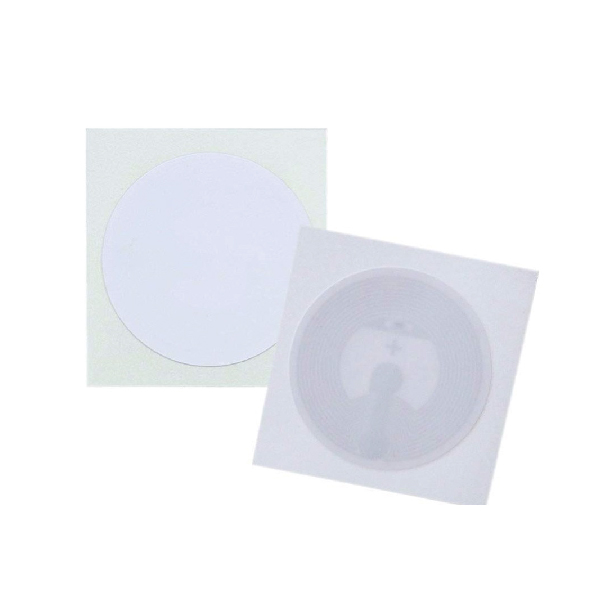
NFC Sticker Tag – NTAG213
A 30mm round white NFC sticker with an NTAG213 chip, perfect for seamless tap-and-go interactions in marketing, automation, and access control.
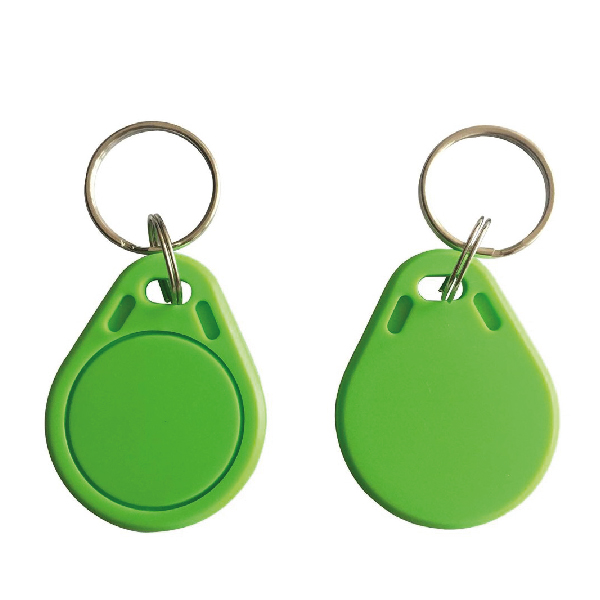
NTAG 213 Keychain Tag
A durable NFC keychain tag with an NTAG213 chip, designed for easy carrying and quick contactless interactions.
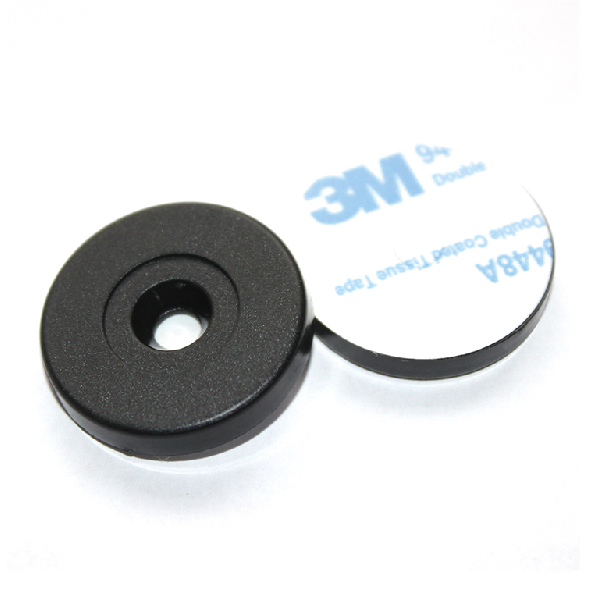
NTAG213 NFC Anti-Metal Tag 30mm with Adhesive & Screw Fixing
A high-performance NFC tag with NTAG213 chip, built for metal surfaces with adhesive backing and screw holes for secure mounting.

Wooden Ntag213 Card (Bamboo)
An eco-friendly bamboo NFC card with an NTAG213 chip, combining sustainability with seamless contactless functionality.
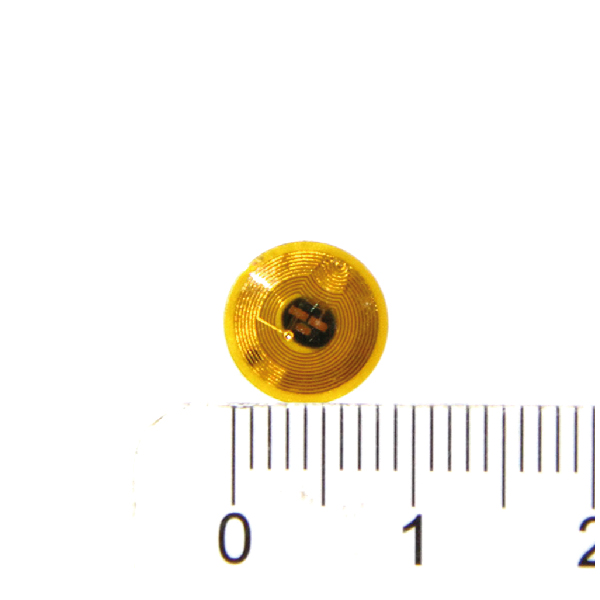
FPC Ntag213 Tag 10x10mm
A compact 10x10mm flexible NFC tag with an NTAG213 chip, ideal for embedding in electronic devices and smart automation projects.
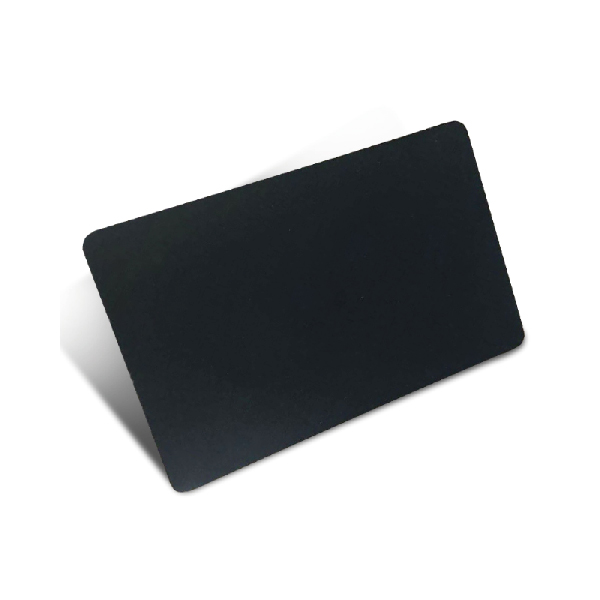
NTAG 213 - Black NFC Card
A sleek black NFC card with white edges and an NTAG213 chip, perfect for access control, digital business cards, and smart authentication.

NTAG215 Plain White Card
A plain white NFC card with an NTAG215 chip, offering more memory than NTAG213 for storing larger data like game amiibos and digital credentials.

NTAG216 Plain White Card
A high-capacity plain white NFC card with an NTAG216 chip, ideal for advanced NFC applications requiring extended data storage.

Google Review NFC Stand
A professional NFC stand with an NTAG213 chip, allowing customers to quickly leave Google reviews with a simple tap.

Google Review NFC Card
A Google-branded NFC card with an NTAG213 chip, enabling customers to leave quick Google reviews with a single tap.
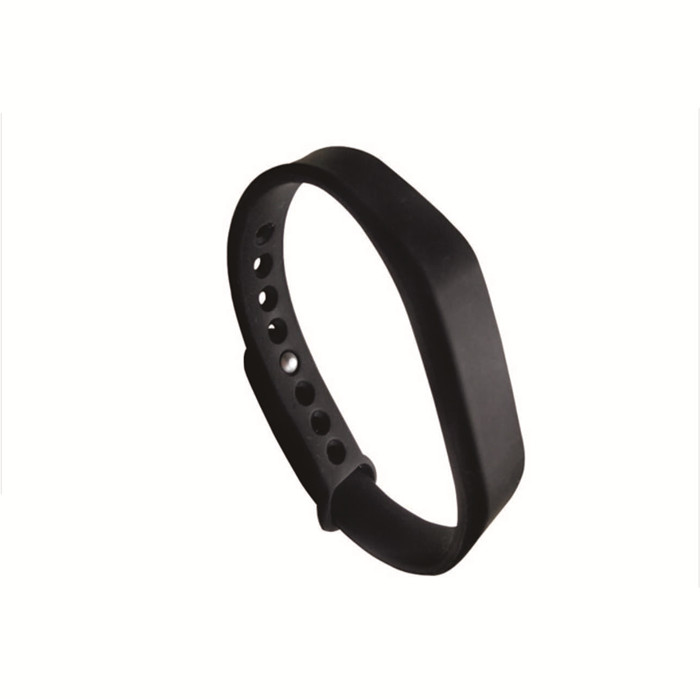
Ntag213 Black Wristband
A sleek, adjustable black silicone NFC wristband with an NTAG213 chip, designed for secure access, payments, and event management.
MIFARE 1K NFC Tags
The MIFARE 1K is a widely used contactless smart card solution designed for secure data storage and fast transactions. Based on the NXP MF1 IC S50 chip, this technology operates at 13.56MHz and complies with ISO/IEC 14443A standards. With a passive design that requires no battery, it ensures efficient and seamless NFC communication.
Key Features of MIFARE 1K
- 1KB Memory Storage: Organized into 16 sectors, each with 4 blocks, allowing secure data segmentation
- Fast & Contactless Data Transfer: Enables quick transactions and authentication
- ISO/IEC 14443A Compliance: Ensures compatibility with global NFC and RFID systems
- Strong Security Mechanism: Supports password-protected memory access, making it ideal for secure transactions
- No Battery Required: Powered by the NFC reader, ensuring low maintenance and long-term reliability
Common Applications of MIFARE 1K Tags
MIFARE 1K technology is highly versatile, making it a preferred choice for industries that require fast and secure data processing.
- Public Transport Ticketing: Used for metro, bus, and train fare collection systems
- Access Control & Employee ID Cards: Ideal for office buildings, schools, and high-security zones
- Time Attendance Systems: Tracks employee clock-in and clock-out data efficiently
- Cashless Payments & Loyalty Cards: Supports prepaid systems in cafeterias, vending machines, and retail stores
- Parking & Road Tolling: Enables automated vehicle access and toll collection
MIFARE 1K Form Factors
To suit different applications, MIFARE 1K technology is available in various form factors, including:
- Plastic NFC Cards (PVC & PET) – Standard for access control and ID badges
- Key Fobs & Tokens – Convenient for secure door entry and attendance tracking
- Adhesive NFC Stickers & Labels – Used for inventory management and cashless vending
- Wristbands & Wearables – Perfect for events, amusement parks, and gym memberships
Why Choose MIFARE 1K?
- Proven Security & Reliability – Trusted by governments, corporations, and transit systems worldwide
- Fast NFC Performance – Ensures quick and hassle-free authentication
- Multi-Purpose Use – Supports a wide range of contactless applications
- Durable & Cost-Effective – Designed for long-term use in demanding environments
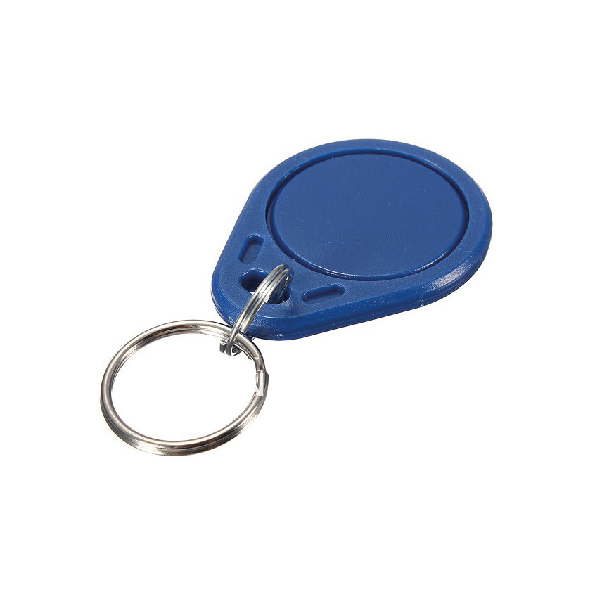
NFC (13.56mhz) Keychain Tag
A sturdy NFC keychain tag featuring a MIFARE 1K chip, perfect for secure access control and smart authentication.

NFC Mifare Card (13.56Mhz) Classic
A plain white PVC NFC card with a MIFARE 1K chip, commonly used for access control, public transport, and contactless payments.

Dual Plain White RFID Cards ( Mifare 1k & 125Khz)
A dual-frequency RFID card with both MIFARE 1K (13.56MHz) and 125kHz chips, suitable for hybrid access control systems.
TK4100 RFID Tags – Simple & Reliable 125kHz Identification
The TK4100 is a read-only 125kHz RFID chip designed for basic identification and authentication. Each chip carries a unique serial number (UID), making it ideal for applications where high security is not required but reliability is essential.
Key Features of TK4100
- Operating Frequency: 125kHz (Low Frequency)
- Read-Only UID: Pre-programmed, non-changeable unique serial number
- Long-Distance Reading: Suitable for applications requiring extended read range
- No Battery Required: Passive RFID technology ensures low maintenance
Common Applications of TK4100
- Access Control & Security Systems – Used in key cards and fobs for restricted entry
- Time & Attendance Tracking – Efficiently logs employee clock-in/out times
- Asset Identification & Management – Helps in tagging and tracking inventory
- Parking & Gate Entry Systems – Enables seamless vehicle access
Available Form Factors
- RFID Cards & Key Fobs – Standard for access control and time tracking
- RFID Stickers & Labels – Useful for asset management and identification
- RFID Modules – Can be embedded into devices requiring long-range reading capabilities
The TK4100 RFID range is a cost-effective, easy-to-use solution for basic access control, tracking, and identification needs.
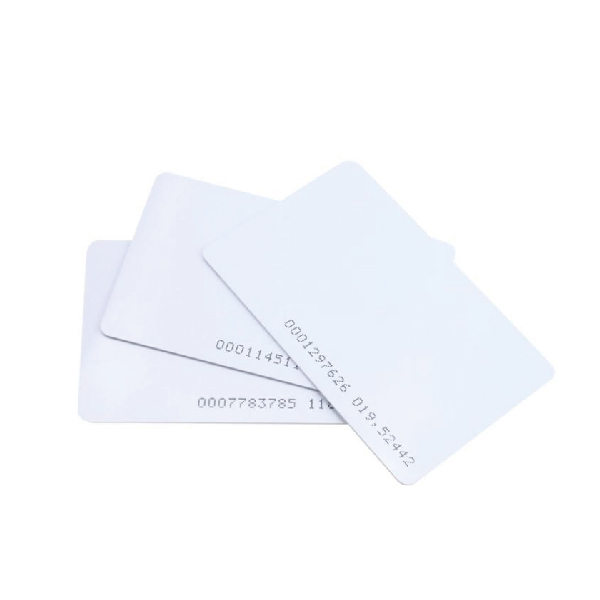
RFID Card - 125kHz
A blank 125kHz RFID proximity card with a unique 32-bit ID, ideal for access control, time attendance, and security applications.
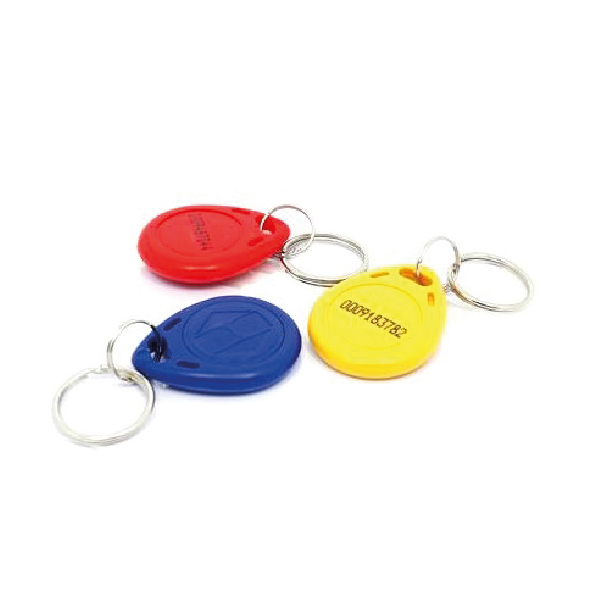
RFID 125kHz Keychain Tag
A compact RFID keychain tag operating at 125kHz, perfect for access control, presence tracking, and security authentication.
USB RFID Readers
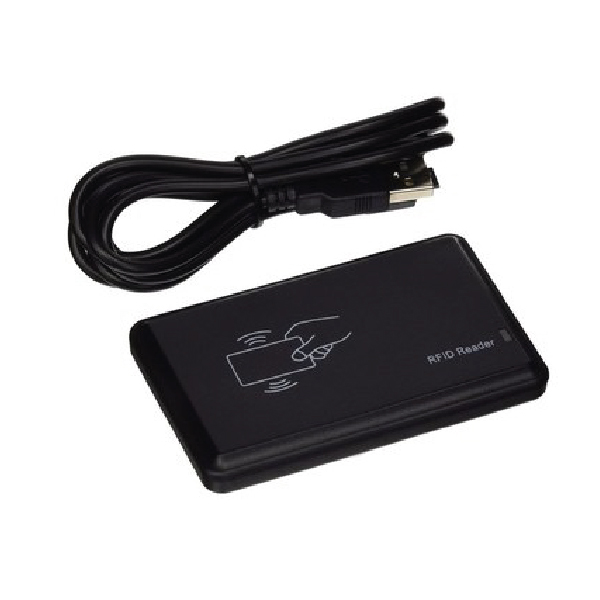
125KHz USB RFID Reader
This is a simple and easy to use USB RFID Reader for 125Khz. It uses standard HID drivers so no installed applications or specific drivers are required.
It allows you to read the card number into any edit text box such as an input field in a piece of software or something simple as notepad. This is great as it works with exisiting software packages and means that you won't need to do any software modications in order to read RFID Cards.

13.56Mhz USB RFID Reader
R20XC is a high performance 13.56MHz RFID smart card reader. It does not only feature convenience and simpleness but also ensures stable and reliable data. With an USB interface, it can be used without a driver. The reader distance is up to 80mm. It can be widely used for RFID ( Radio Frequency Identification System ) and project, such as automated parking management system, personal identification, access control, production access control, etc.
Custom Branding & Bulk Purchases
We provide extensive customisation options to ensure your products are perfectly aligned with your brand identity. Our customisation services include:
- Silk Screen Printing
- UV Printing
- Metallic Printing
- Transparent Plastic
- Laser Engraving
- Foil Stamping
- Embossing
- Magnetic Strips
- Holographic Printing
- Hole Punching
- Lenticular Printing
- Barcode
- QR Code
- Scratch Panels
- Anti-Counterfeiting Technology
- Engraving
How Our Customisation Process Works
- Choose Your Product: Select from our range of NFC or RFID products.
- Submit Your Design: Provide your design specifications, including logos, text, or artwork.
- We Handle the Rest: Our team manages every step, ensuring accurate reproduction of your design.
- Receive Your Final Product: Get a high-quality product that meets your specifications and enhances your brand.
We offer discount on bulk purchases with a lead time of 10 - 15 working days. Contact us to get your quote today!
Industries We Serve
- Event Management: Ticketing, attendee tracking, and access control.
- Healthcare: Patient identification, equipment tracking, and medication management.
- Logistics and Supply Chain: Asset tracking, inventory management, and shipment tracking.
- Retail: Customer engagement, loyalty programmes, and inventory management.
- Education: Student identification, access control, and library management.
- Transportation: Fare collection, vehicle tracking, and passenger information systems.
- Hospitality: Guest check-in, room access, and service personalisation.
- Manufacturing: Production line tracking, equipment maintenance, and quality control.
- Security: Access control, surveillance, and secure authentication.
- Finance: Secure transactions, cardless payments, and identity verification.
Our RFID and NFC solutions are crafted to meet the distinct needs of these industries, boosting operational efficiency and security.
Why Choose Netram Technologies?
At Netram Technologies, we prioritise quality and customer satisfaction. We offer competitive pricing, fast turnaround times, and reliable support to ensure you receive the best RFID and NFC solutions.
Get Started Today
Enhance your business with our customisable RFID and NFC products. Contact us today for a personalised quote:
- Phone: 021 300 3116
- Email: info@netram.co.za
- WhatsApp: +27 21 300 3116

